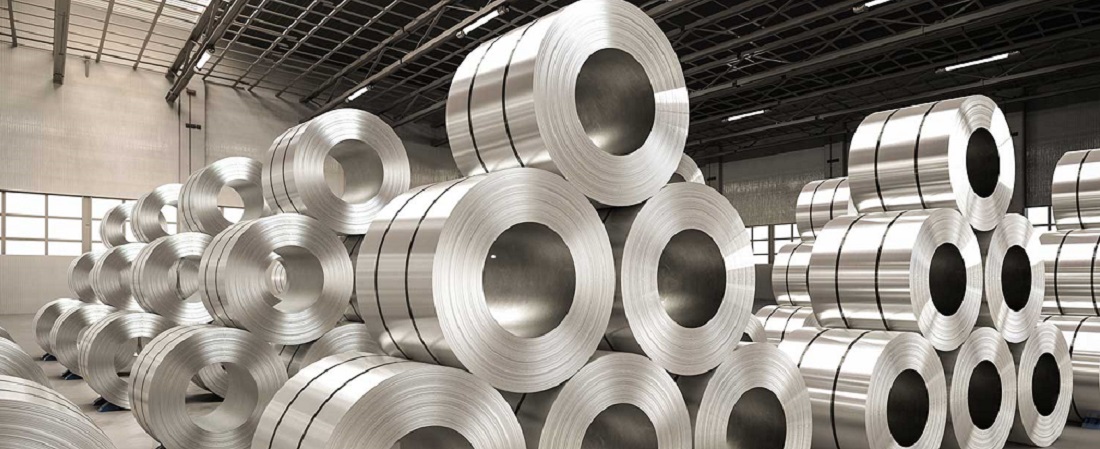
After government measures, steel companies revise projections
Jun, 25, 2024 Posted by Gabriel MalheirosWeek 202426
The federal government’s decision to establish quotas for the import of 11 types of steel products, with a 25% tariff on surplus volume, is expected to bring moderate improvements to the Brazilian steel industry in the second half of the year, according to the Brazil Steel Institute (Aço Brasil).
Although imports had risen through May, driven by a global oversupply and unfair competition practices by some producing countries, the trade association expects that the measures implemented this month will reduce imports by 1.5 million tonnes this year.
“It’s not the best [agreement], nor the one we initially wanted. But we believe it’s an agreement that, if it works, will significantly improve the situation of the steel industry in Brazil,” said Jefferson De Paula, chairman of Aço Brasil and CEO of ArcelorMittal Brasil.
From January to May, steel product imports rose by 26.4% to 2.3 million tonnes, while domestic production saw a slight increase of 0.6%, reaching 13.6 million tonnes. Last year, total imports reached 5 million tonnes, mostly from China, 50% higher than in 2022, while domestic production shrank by 6%.
Marco Polo de Mello Lopes, managing director of Aço Brasil, noted that the 30% increase in the average imports of steel products between 2020 and 2022 used to define the quotas was not exactly what the Brazilian industry had sought. “The quota is generous, beyond what we thought was necessary to regulate the market, because of this 30% delta,” he said.
Industry representatives will meet with the government next week to discuss the results of the measure so far and any necessary adjustments. The industry has already detected, for example, an increase in rebar imports, which are not included in the initial list of products subject to quotas.
Nevertheless, there will be gains, and steel companies have revised their forecasts for 2024 upward. They now project a 0.7% increase in steel production, reaching 32.2 million tonnes, compared to the previous estimate of a 3% decline. For imports, the projection, which at the end of 2023 was for a 20% increase, has shifted to a 7% decrease, totaling 4.7 million tonnes. Domestic sales are expected to grow by 2.5% to 20 million tonnes, against an initial forecast of a 6% decline.
According to Mr. De Paula, steel consumption did not see significant growth in the first months of the year but could end 2024 with an accumulated increase of 1% to 3%. This outlook considers the strong performance of the construction sector, with more projects in the My Home My Life housing program and a resurgence of real estate launches, as well as a more active automotive market for both light and heavy vehicles.
With the impact of the measures on the domestic market, the sector is expected to gradually reduce idle capacity and maintain the planned R$100 billion investment package for the next five years. Asked about steel price increases in the domestic market, which have already started to be announced, the association’s leadership pointed to market economics.
“It wasn’t said that there would be no price increases. One thing was the claim by consumer sectors that the industry wanted to raise prices. Price speculation is not on the radar, but in a market economy, companies will have to make adjustments,” said Mr. Lopes.
As proof that Brazilian mills follow the international market, Aço Brasil noted a 12.7% drop in domestic hot coil prices from January 2023 to mid-June this year, in line with prices in other countries.
“In these 10 months [of talks with the government], there was a lot of discussion about price. But the price is set by the market, and it was agreed that our prices would be market-based,” said Mr. De Paula.
Faced with the surge in imports since the end of 2022, the industry had sought some form of trade defense from the government. In February this year, Aço Brasil requested the adoption of a quota-tariff system for 18 types—Mercosur Common Nomenclature (MCN)—of steel products and succeeded for nine of them. Two MCNs for tubes were also approved.
Now, said Mr. Lopes, the industry and the government are monitoring 27 other MCNs to prevent imports of similar products, not on the quota list, from circumventing the rules.
Translation: Carlos Dias
-
Other Cargo
Feb, 09, 2022
0
Footwear manufacturers export 14 million pairs in January, confirming the industry’s recovery in 2021
-
Trade Regulations
Jul, 11, 2022
0
Fertilizers: Ukraine eliminates nitrogen export quotas
-
Shipping
Nov, 24, 2021
0
Black Friday could break cabotage record, according to Aliança
-
Economy
Nov, 01, 2023
0
New DataLiner Data: Brazilian Container Exports Decline, Imports Show Growth in September



